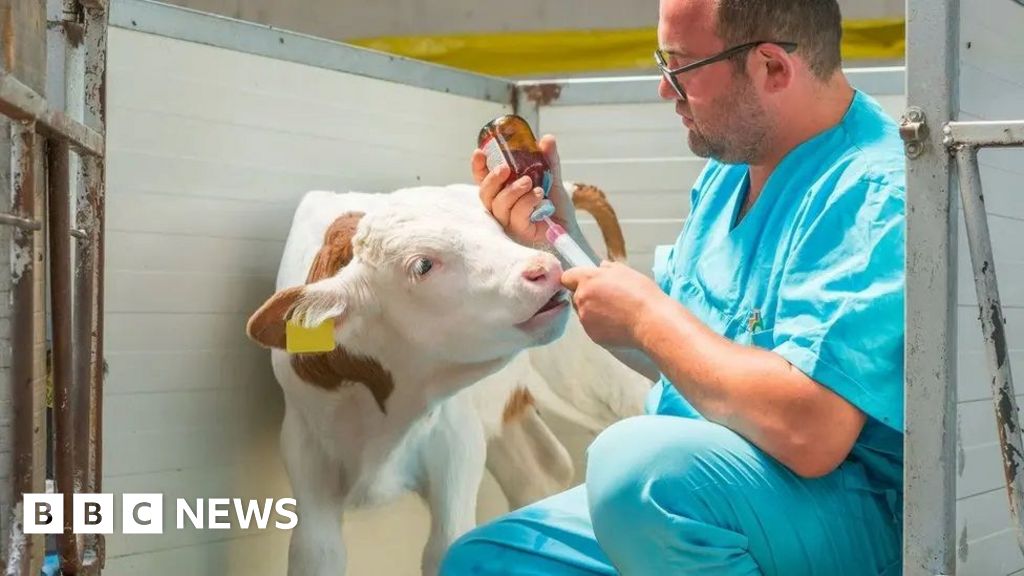- Weekend Rounds
- Posts
- Will 2025 be a reckoning for Pet Care?
Will 2025 be a reckoning for Pet Care?
Plus: why are cats a black box and some quick hits
Hello 👋
Welcome back to an evening edition of Weekend Rounds!
Lets get right to it. It is a pretty short news week and you’re running out of time to read our usual quippy intro this late in the day.
Here’s what we’re covering:
😬 Will 2025 be a reckoning for pet care?
🐈 Vet Med in the NYT
🚀 Quick hits

😬
Will 2025 be a Reckoning for Pet Care?
The post-pandemic veterinary industry is hitting a wall. After years of booming demand and price-driven revenue growth, clinics now face declining visits, shrinking active patient bases, and stagnating revenue. The latest Vetsource white paper, released to attendees at WVC, breaks down the numbers and paints a stark picture: pet owners are visiting less often, wellness care is lagging, and economic pressures are making them more selective about veterinary spending.
From a 7% revenue growth rate in 2019 to barely scraping 4% in 2024, the trajectory is clear. Price hikes can’t indefinitely compensate for declining visits—especially when veterinary service inflation is outpacing the national average. The result? A 48% increase in the time between pet visits since 2020. Product-only visits (like prescription refills) are dropping the fastest, down 7%, but even wellness visits are slipping at nearly 3% annually. Pet owners are stretching their budgets, opting for cheaper options outside of the clinic, or delaying care altogether.
This behavior shift extends beyond routine visits. Surgery spend is down 1.5% per patient, pharmacy purchases are flat, and therapeutic diet sales are plummeting. Only 7% of dermatology patients and 3% of osteoarthritis patients are on a recommended therapeutic diet. Meanwhile, 58% of dog owners don’t buy parasiticides from their vet at all. The traditional model of selling food and medications through veterinary clinics is crumbling as consumers explore alternative purchasing channels.
Even worse, the industry’s most valuable clients—dog owners—are disappearing. The number of active canine patients has dropped 3.3%, a major blow given that dogs drive 81% of practice revenue. New client acquisition is also faltering, with puppy and kitten visits down 9% and new clients overall down 8.6%. These trends directly hit veterinary profitability, with practices losing up to $118,800 annually due to fewer patient visits per veterinarian.
So what’s the move for 2025? Vetsource suggests three key areas of opportunity:
Client Retention Over Price Hikes – The pandemic era of survival-mode pricing is over. Clinics that focus on strengthening client relationships—through improved communication, digital appointment booking, and personalized outreach—will keep their patients engaged. Automated reminders, texting options, and seamless digital interactions are now table stakes.
Flexible Financial Models – With 66% of Americans living paycheck to paycheck, expecting clients to absorb endless price increases is a losing strategy. Practices need to rethink their pricing structures, offer a true “spectrum of care,” and introduce flexible payment options like split invoices, loyalty programs, and financing plans to keep care accessible.
Operational Efficiency & Data Utilization – Veterinary teams are stretched thin. Practices must leverage technology to automate tasks, analyze patient data for targeted outreach, and measure performance to ensure changes are driving growth. The tools exist—now it’s about adoption.
The takeaway? Veterinary medicine is at an inflection point. Simply charging more for fewer visits isn’t sustainable. The clinics that embrace a more customer-centric, tech-enabled approach will thrive. The rest? They’ll struggle to keep pace in a world where pet owners have more choices—and less patience—than ever before.
Of course VetSource suggest their Vet2Pet software, but there are lots of tools available today which will make this easier for veterinarians. If you have a novel way you are negotiating this trend in your practice hit reply to this email and tell us about it. We would love to hear it.
🐈
Vet Med in the NYT
We like it when the profession gets major news coverage, when it doesn’t focus on cost of care or dragging vets in general. This past week New York Times Science reporter Emily Anthes shared her personal journey with her cat Olive, who faced a critical battle with severe anemia. This story underscores the broader challenges in diagnosing and treating feline health issues.
Experts like Karen Perry (Orthopedic Surgeon and MSU Pat Carrigan Professor of Feline Medicine) and Bruce Kornreich (Cardiologist and director of the Cornell Feline Health Center) highlight that cats have historically been understudied compared to dogs. Sometimes we treat cats as small dogs, but this approach falls short due to significant differences in drug metabolism and disease presentation. Cats are masters at masking their symptoms, making it tough for owners to detect illnesses early. The stress of vet visits and the lack of evidence-based treatments specifically for cats further complicate their care.
However, there's hope on the horizon. Initiatives like the Darwin’s Cats project aim to unravel the genetic secrets of feline health and behavior. This innovative project even uses DNA sequencing from cat fur to gain insights.
Emily's story of Olive's illness and eventual passing is poignant, but it also leaves on a note of hope towards advancing feline health research. By involving Olive's littermate, Juniper, in the Darwin’s Cats project, the author and her companions continues to contribute to a brighter future for our feline friends.
🚀
Quick Hits
Here are some of the other stories that caught our eye and we're following this week from around the veterinary world and animal kingdom:
How did we do today?Tell us what you thought of this edition of Weekend Rounds so we can keep improving! |





